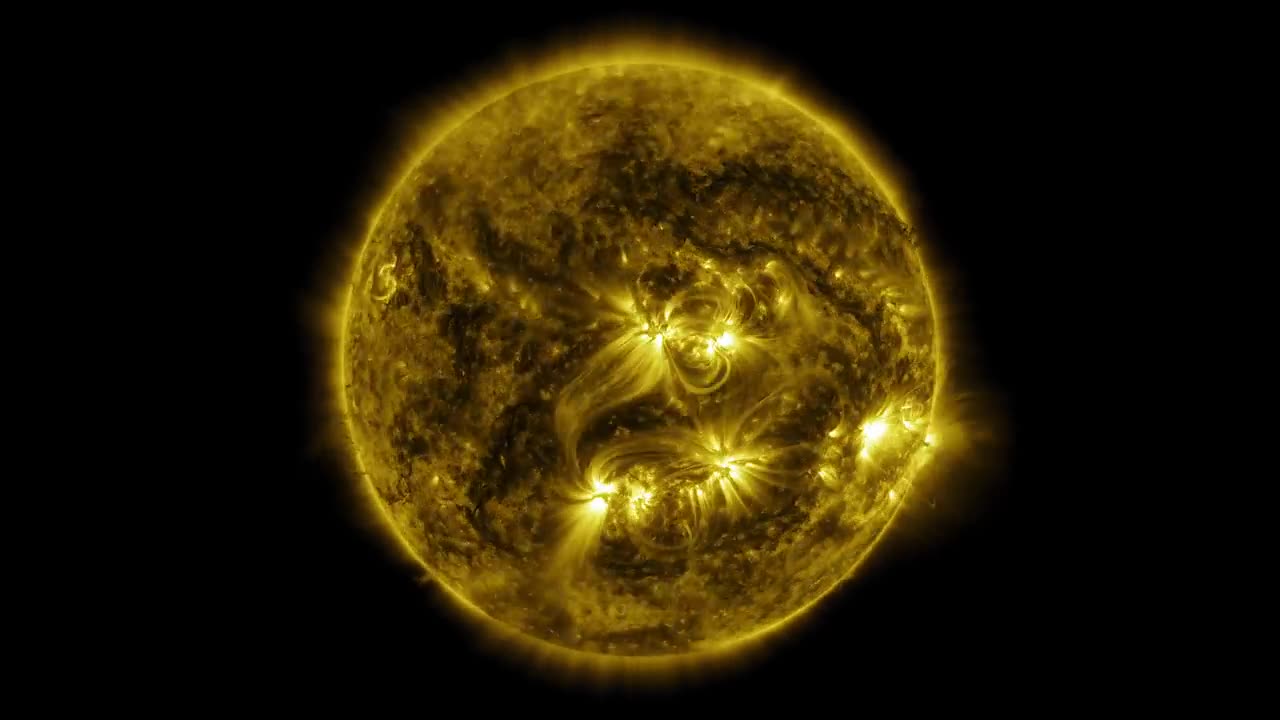Premium Only Content

SDO: Year 6 Ultra-HD
The sun is always changing and NASA's Solar Dynamics Observatory is always watching. Launched on Feb. 11, 2010, SDO keeps a 24-hour eye on the entire disk of the sun, with a prime view of the graceful dance of solar material coursing through the sun's atmosphere, the corona. SDO's sixth year in orbit was no exception. This video shows that entire sixth year -- from Jan. 1, 2015, to Jan. 28, 2016, as one time-lapse sequence. At full quality on YouTube, this video is ultra-high definition 3840x2160 and 29.97 frames per second. Each frame represents 2 hours. A downloadable version has a frame rate of 59.94 with each frame representing 1 hour. See below for the link. SDO's Atmospheric Imaging Assembly (AIA) captures a shot of the sun every 12 seconds in 10 different wavelengths. The images shown here are based on a wavelength of 171 angstroms, which is in the extreme ultraviolet range and shows solar material at around 600,000 kelvins (about 1,079,540 degrees F). In this wavelength it is easy to see the sun's 25-day rotation. During the course of the video, the sun subtly increases and decreases in apparent size. This is because the distance between the SDO spacecraft and the sun varies over time. The image is, however, remarkably consistent and stable despite the fact that SDO orbits Earth at 6,876 mph, and Earth orbits the sun at 67,062 mph. Scientists study these images to better understand the complex electromagnetic system causing the constant movement on the sun, which can ultimately have an effect closer to Earth, too: Flares and another type of solar explosion called coronal mass ejections can sometimes disrupt technology in space. Moreover, studying our closest star is one way of learning about other stars in the galaxy. NASA's Goddard Space Flight Center in Greenbelt, Maryland, built, operates and manages the SDO spacecraft for NASA's Science Mission Directorate in Washington, D.C. Credit:
-
 LIVE
LIVE
PizzaSlayer
5 hours ago🍕🗡️{Switched to Siege} Hawaii so Kawaii ^_^🍕🗡️
477 watching -
 LIVE
LIVE
Dabkillah
5 hours ago🔴LIVE-DABKILLAH-FORTNITE-KICKASS AND TAKING NAMES
79 watching -
 LIVE
LIVE
Joker Effect
43 minutes agoRAGE?! How about Gaming on RUMBLE?! Tonight...The Real Joker rages at The First Berserker
381 watching -
 LIVE
LIVE
Vorrhese
52 minutes agoLIVE: The First Berserker: Khazan - Lets Play!
147 watching -
 LIVE
LIVE
rosssims
1 hour agoSims Games: Simsy plays Stardew Valley ‽ ‽ ‽
58 watching -
 10:09
10:09
China Uncensored
7 hours agoTrump Just Hit China Where It Hurts
9205 -
 2:42:25
2:42:25
DrDamon
3 hours ago🟢 LIVE - Old Man Gets Carried in Video Games | USE CODE: "DRDAMON"
22 -
 LIVE
LIVE
Koke
5 hours agoCore Keeper Bags & Blasts Hardcore - Bird Boss!
71 watching -
 44:15
44:15
Film Threat
7 hours agoLIVE FROM WONDERCON IN ANAHEIM | Film Threat Live
317 -
![[PT-ENG] Pt. 2: The First Berserker: Khazan – Isto é facileee...](https://1a-1791.com/video/fww1/28/s8/1/e/G/m/x/eGmxy.0kob-small-PT-ENG-Pt.-2-The-First-Bers.jpg) LIVE
LIVE
Farukzzz
3 hours ago[PT-ENG] Pt. 2: The First Berserker: Khazan – Isto é facileee...
65 watching